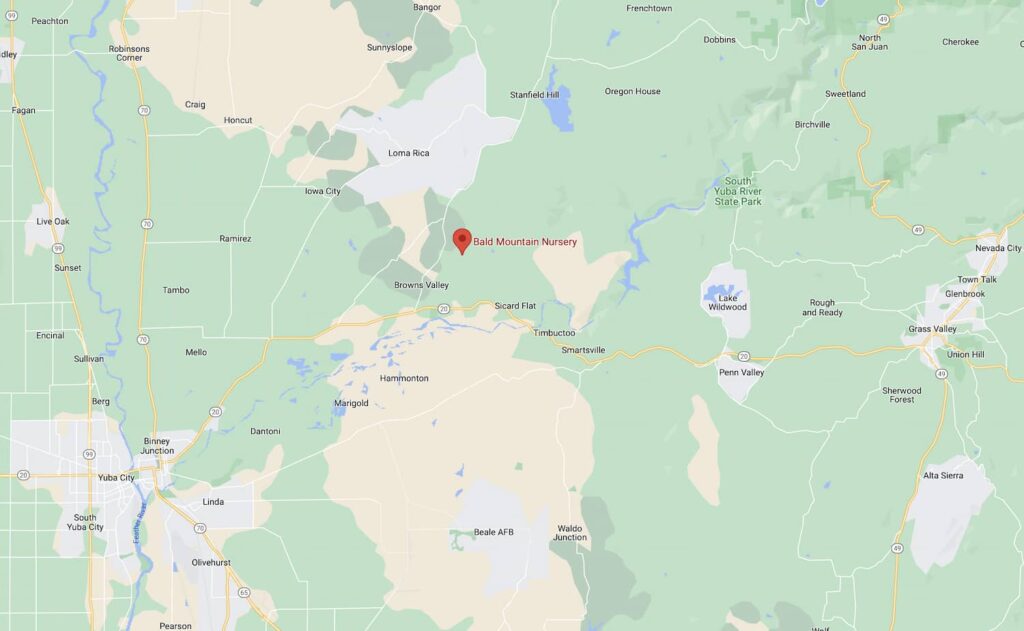Well, it’s been a very wet a cold spring so far. Lots of water which we needed so certainly happy to have that. Looking at the forecasts, looks like we are going to dry out to an extent with some nice warmer days. Turning out to be a very nice spring.
We have a large selection of vegetable starts and more coming on in our greenhouse, plus regular deliveries, so we will have a good selection of vegetables for the planting season. As the season goes on the selection gets better. Don’t plant too early. Wait until the nighttime temperatures are consistently 50 degrees, or close to it. The ground needs to be warm to get good results from your vegetables. Get your gardens prepped if you haven’t done that yet so you can plant your vegetable starts when the weather is right. I always use Bio-Live fertilizer and bone meal and kelp meal mixed in the soil before I plant. Bone meal adds calcium to prevent blossom end rot. Kelp meal helps with disease prevention. After you have your plants in, use straw or mulch on the top to help keep the moisture in and keep the weeds down.
Many other things are needing to be done in the landscape during April.
Rhododendrons should have the flower trusses that are spent snapped off at the base as soon as they fade. Don’t wait until all the flowers have finished blooming to remove them because the plant will expend energy making seeds that would be better used to add new foliage when it has completed the bloom cycle. Fertilize them right after flowering with a rhododendron azalea camellia fertilizer now and then again in 30 days and a final time 30 days after that. The same treatment applies to azaleas when they are done blooming.
Daffodils that were blooming earlier are now done here at the nursery. After they are done blooming, don’t cut off the leaves while they are still green. While the leaves are green, fertilize them with a high phosphorous fertilizer or one labeled “bulb food”. The old leaves can be pulled up when they have turned yellow or brown.
If you haven’t fertilized yet, it is time to do it. With the cool temperatures and the moisture we have had, it is an excellent time to fertilize your landscape. An all purpose fertilizer will work for trees and shrubs. Citrus fertilizer for citrus trees. And an acid fertilizer for rhododendrons, azaleas, and camellias as well as blueberries. Be sure to water your plants well the day before you apply the fertilizer. Never fertilize a dry plant. Nitrogen part of fertilizer moves with water and if the plant is dry, it can pull up too much nitrogen when you water after applying the fertilizer and burn the plant. If it is moist and the fertilizer is applied and watered in, the plant pulls it up slowly since it is not thirsty.
Keep on top of the aphid problems and the fungus. Fungus problems, especially on roses will probably start to show up with all the moisture we are having. Neem oil works as a fungicide and insecticide so is a good option for roses. Spray before you see the problems to help prevent them. We started spraying the roses here at the nursery in March with Neem Oil and will continue roughly every two weeks, so we don’t have issues. Once it warms and gets dryer, we will reduce the frequency.
If you planted any bare root fruit trees this year or last year, the trunks of the trees should be painted with white tree trunk paint so that the young, thin bark does not become sunburned and cracked allowing insects to damage the cambium layer which carries nutrients to all parts of the tree. Do not use an oil based paint. A light colored, water based latex paint diluted by 50% works well.
Hopefully you can get out and enjoy the nice weather that is coming in the garden.
Thank you all for your continued support and we hope to see you soon.
Jeff

